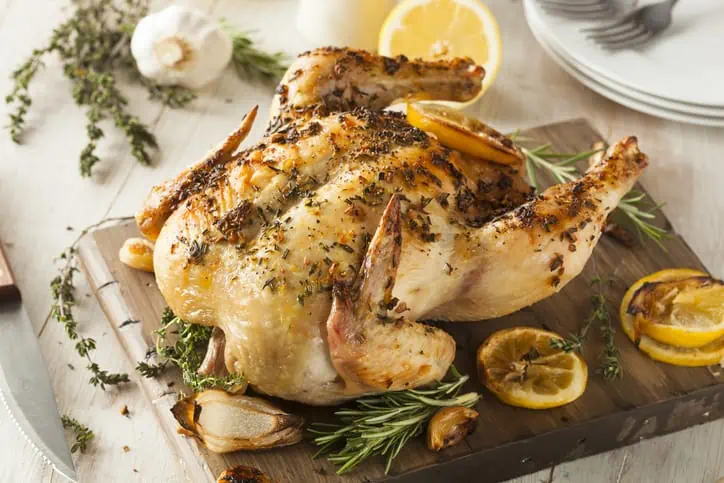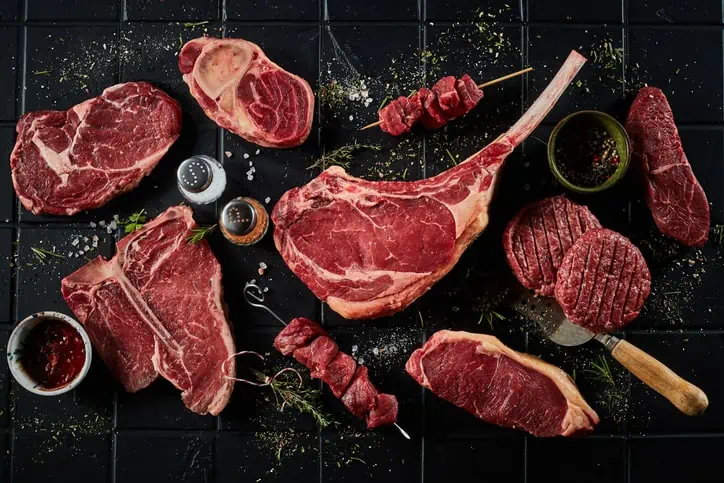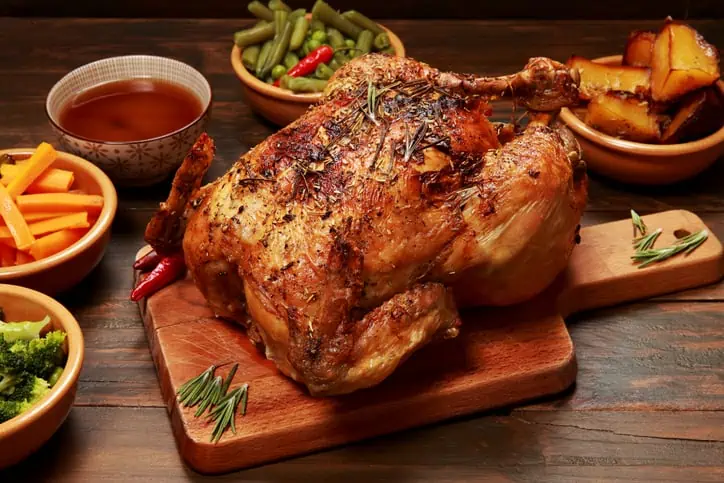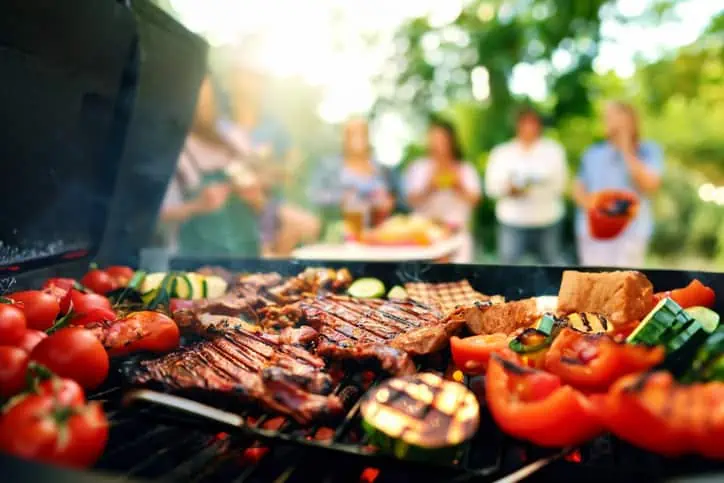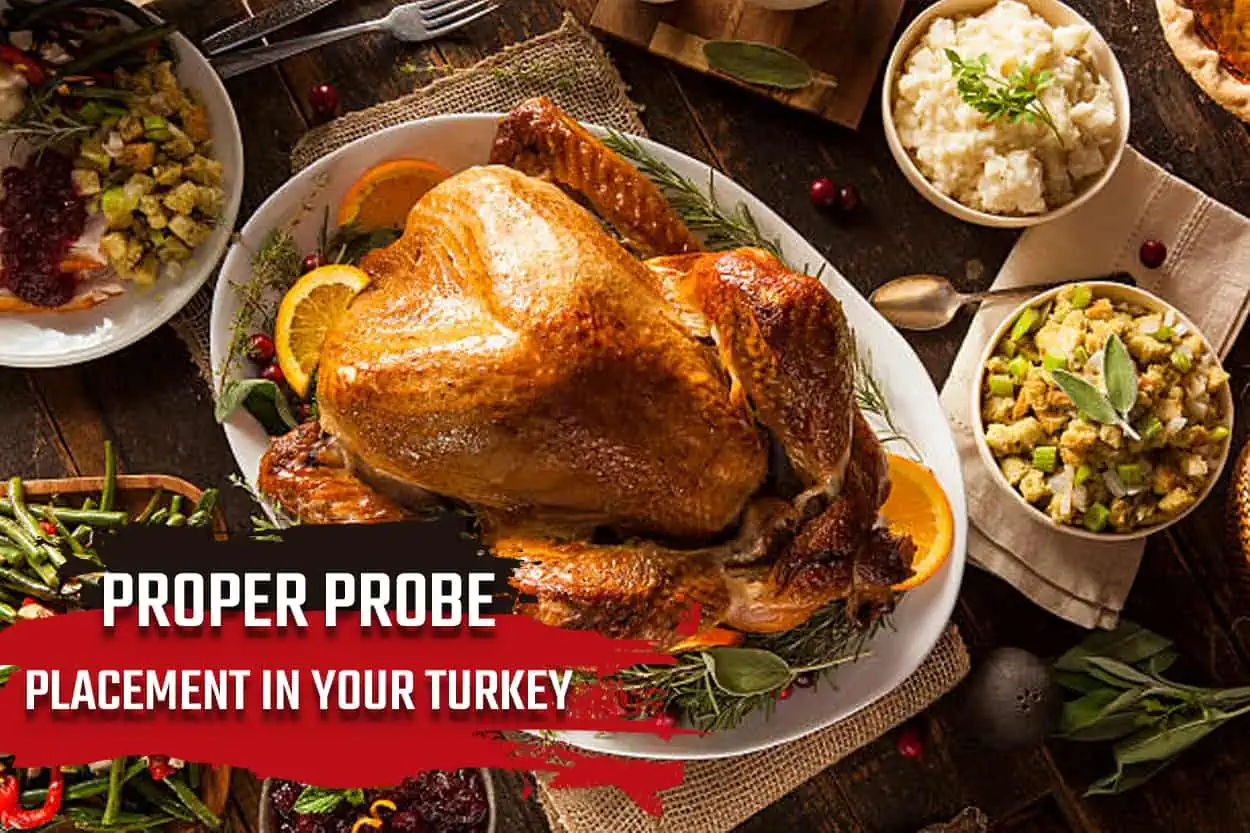
Proper Probe Placement in Your Turkey
On the auspicious occasion of Thanksgiving, every dinner table gets decorated with several cuisines along with the chief of them being Turkey. To ensure that this year you serve your family and friends with well-cooked and delicious Turkey, we are here to tell you the best way to do it.
While cooking, it is essential to keep an eye on the internal temperatures of the meat to prevent it from over or undercooking. Resultantly, avoid causing any of the foodborne diseases, and prevent instances of embarrassment in front of the guests. The correct temperature is measured using digital or analog meat probe devices, properly inserted in different parts of the meat.
As we proceed, we’ll be elaborating on how and where to place the meat thermometer to get the right inner temperature.
Where to Place Your Meat Probes?
Measuring the temperatures at different parts is generally recommended to make sure whether the meat is safe to consume, or does it still need some more heat. Some of those preferred areas are legs, wings, and breasts. Since the breast is quite thick, the temperatures on the inside will vary superficially. Whereas, legs and wings temperature are easy to be gauge due to thin flesh. Therefore, different temperature checks are important to cook your Turkey well done. The right temperature is the key to reach while cooking any sort of meat. Beginner chefs need guidance that can make them learn how to go through all the processes timely, without letting the meat lose all its flavors and aroma.
While Cooking
It is necessary to gauge internal temps when your turkey is still in the oven. Experts recommend doing it by simply placing the probe of the leave-in thermometer in the deepest part of Turkey’s breast. This will be reached by inserting it perpendicularly to get to the maximum depth. Make sure that the thermometer must not go into the cavity area or it won’t gauge accurate readings. Also, use a heat-resistant device for this sort of measurement. Don’t keep it away from the heat source until the internal temp reaches 165°F (73°C).
After the Cooking Is Done
Check for the temperature after you remove your turkey from the oven or barbeque grill. The wings and legs must have 175°F – 180°F (79-82°C). The breast is deemed good to be at 165°F to 170°F (73-76°C) to kill all the germs and bacteria.
The Correct Depth It Must Go
Well before you take your turkey out of the oven, stick the thermometer in the deeper portion to gauge the exact degrees of heat. The meter should be inserted into the bird’s deepest body. This isn’t to say you should cook it all the way across; if you do, you risk missing the bit that heats the last few minutes. The balance point is when there is an equal layer of flesh along with the front probe. To put it another way, the probe must be uniformly encompassed with flesh on both sides.
Is It Necessary to Measure the Internal Temp?
Well, as far as healthy eating is concerned, cooking every meal to a safe temperature is of great importance as many diseases are developed just because of unhealthy food. It is better to avoid regularly having food at the eateries. Besides, home-cooked food is way better, helping avoid foodborne illnesses, and also assisting with leading a wholesome lifestyle.
It is a good practice to gauge food’s internal heat to make sure whether it is cooked up to the marked temp or not. This way you will be able to ensure the safety of your family.
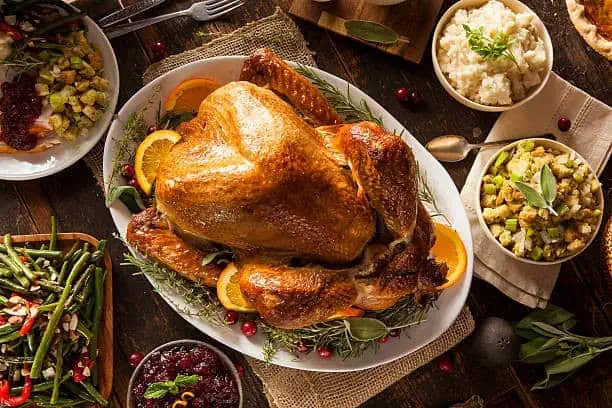
How to Position the Thermometer Correctly?
Side to side, from around the neck cavity, insert the probe. Sounds very simple, right?
To prevent contacting the bone, the probe’s tip must be roughly half an inch from the bird’s interior cavity.
Well, with the device inserted, you can monitor the interior temperature of the breast during the cooking process. Keep in mind that breast and leg meats should always be cooked at various temperatures.
The breast will dry out if overdone, so make sure that your breast is at room temperature.
Step-1
The temperature gradient is the difference between temperatures on the surface and inside the meat. A temperature gradient is the temperature difference between the outside and inside of the meat. As the cooking temperature increase, the heat gradient measurement also increases.
In simpler words, a turkey cooked at above 300°F (148°C) tends to have a wider band of overdone meat around its borders than a turkey prepared at 250°F (121°C).
Heat travels from the region of lower concentration to higher one. The superficial region of the turkey is at a greater temperature than the interior due to the way heat is carried through the meat.
Step-2
There is always a mark given at the center of the probe which is a sign that it should go deep inside the meat till that mark and not more than that. The average insertion depth is around 10cm to 12cm. The sensors are attached at the tip of the probe. It will also let you measure the average temp instead of the accurate one.
Best Internal Temperatures Before Serving
|
Time |
Duration |
|---|---|
|
136°F (58°C) |
65.3 minutes |
|
140°F (60°C) |
29 minutes |
|
145°F (63°C) |
10.8 minutes |
|
150°F (66°C) |
3.7 minutes |
|
155°F (68°C) |
1.2 minutes |
|
160°F (71°C) |
26.1 seconds |
|
165°F (74°C) |
Instant |
Using Food Thermometers
Turkey, the signature dish on Thanksgiving, lack of balance doesn’t help much with temperature checking. It makes it challenging to get it exactly right with two types of meat, and an odd, uneven shape doesn’t help much too. That’s why using your thermometer to cook your bird is so vital. Using a leave-in thermometer to monitor the temperature of your turkey’s can assist you to remove it out of the oven even before it dries out. And employing an extremely quick thermometer to double-check for doneness will guarantee your family’s safety.
Hence, whether you’re roasting, smoking, frying your turkey, perhaps the most critical step to making it correct is positioning your gauge in the correct spot.
Discover more recipes and learn kitchen tricks by joining our cooking family on Facebook.
Shop now for products used in this post:
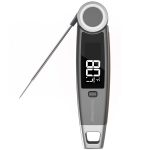
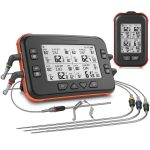
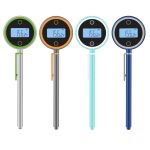
You may also like:
